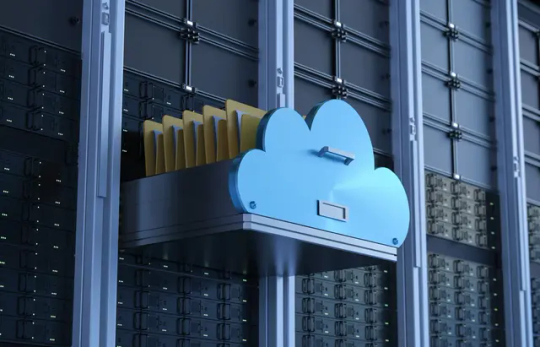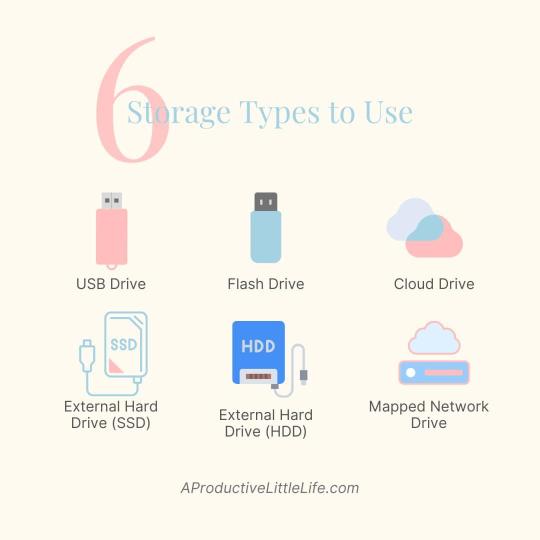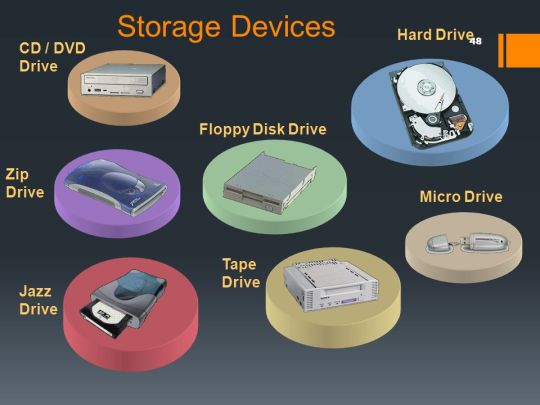#DataStorageTrends
Explore tagged Tumblr posts
Text
Cloud Storage Market Future Trends Indicate Advanced Security, Scalability, and AI-Driven Data Management Growth
The cloud storage market is poised for remarkable transformation as digitalization continues to accelerate across industries. With enterprises generating unprecedented volumes of data, cloud storage has become a central pillar of modern IT strategies. As we look ahead, several key future trends are set to redefine how cloud storage is utilized, optimized, and secured.
From AI-powered data management and edge integration to sustainable infrastructure and privacy regulations, the future of cloud storage promises smarter, faster, and more secure data ecosystems that adapt to evolving business needs.

AI and Machine Learning Integration in Cloud Storage
One of the most significant future trends in the cloud storage market is the integration of artificial intelligence and machine learning into storage systems. Cloud providers are increasingly embedding AI-driven tools to improve data management, automate workflows, and enhance search capabilities.
Smart storage solutions can now detect patterns, classify files, and optimize storage allocation based on usage behavior. AI also plays a key role in anomaly detection and predictive maintenance—helping organizations identify potential risks before they affect performance or security.
This trend toward intelligent storage will reduce human effort, improve operational efficiency, and enable real-time decision-making across enterprise environments.
Expansion of Hybrid and Multi-Cloud Strategies
Organizations are moving away from single-vendor dependency by embracing hybrid and multi-cloud strategies. This trend is driven by the need for flexibility, cost optimization, regulatory compliance, and risk diversification.
Hybrid cloud combines on-premises infrastructure with cloud-based solutions, allowing businesses to maintain control over sensitive data while leveraging the scalability of the public cloud. Multi-cloud, on the other hand, enables companies to use different cloud providers for different workloads—optimizing performance and avoiding vendor lock-in.
As cloud storage evolves, future solutions will increasingly support seamless integration between platforms, unified management interfaces, and automated data migration across environments.
Advanced Data Security and Zero Trust Architecture
With data breaches and cyber threats becoming more sophisticated, data security is a top priority for the future of cloud storage. Upcoming trends will focus on implementing zero trust architecture, advanced encryption models, and continuous threat monitoring.
Cloud providers are expected to offer end-to-end security frameworks, including secure access protocols, immutable backups, and multifactor authentication. In addition, confidential computing is emerging as a method to encrypt data during processing—an essential advancement for privacy-sensitive industries like finance and healthcare.
The future of cloud storage will prioritize not just data availability, but data integrity and privacy at every stage.
Growth in Edge Storage and Decentralized Architectures
The rapid adoption of IoT devices and real-time applications is driving the need for edge storage—bringing storage closer to where data is generated. This reduces latency, improves speed, and ensures continuity even when internet connectivity is limited.
Edge storage complements centralized cloud solutions, enabling faster response times for mission-critical operations in industries like autonomous vehicles, smart manufacturing, and telemedicine.
Decentralized storage models are also gaining attention. By distributing data across peer-to-peer networks or blockchain-based platforms, decentralized storage enhances redundancy, transparency, and resistance to single points of failure.
These innovations signal a shift toward more resilient and distributed storage ecosystems.
Sustainability and Green Cloud Storage Initiatives
As environmental concerns rise, sustainability is becoming a key consideration in cloud storage development. Data centers consume vast amounts of energy, and cloud providers are now focused on minimizing their carbon footprint through renewable energy usage, efficient cooling systems, and AI-optimized energy consumption.
Future trends will see green data centers powered by solar, wind, and hydroelectric sources becoming the standard. Storage hardware will also become more energy-efficient, with innovations like liquid cooling and energy-aware storage tiers gaining traction.
Organizations will increasingly prefer providers that align with ESG (Environmental, Social, Governance) standards, driving a greener cloud storage future.
Compliance, Data Sovereignty, and Localization
As global data protection laws continue to evolve, compliance and data sovereignty are becoming critical to cloud storage decisions. Regulations such as GDPR, CCPA, and others mandate strict data handling practices, including where and how data is stored.
Future trends will involve cloud storage platforms offering region-specific data centers and customizable compliance features. Businesses will seek providers who can ensure that sensitive data remains within legal jurisdictions while meeting audit and governance standards.
The ability to localize storage infrastructure while maintaining global scalability will be essential in regulated industries and across international operations.
Scalability and Tiered Storage Solutions
With the exponential growth of unstructured data, scalability and intelligent tiering are essential for managing costs and performance. Future cloud storage models will offer dynamic tiering—automatically moving data between hot, warm, and cold storage based on access patterns.
This enables cost optimization while ensuring frequently used data remains easily accessible. Furthermore, serverless storage solutions are expected to gain traction, allowing users to pay strictly for the storage and performance they use without managing infrastructure.
Intelligent tiered storage will help businesses cope with data expansion while maintaining a balance between cost efficiency and accessibility.
Conclusion
The future of the cloud storage market is driven by the convergence of technology, regulation, and user demand. With advancements in AI, edge computing, sustainability, and security, cloud storage is no longer just a data repository—it is becoming a strategic enabler of digital transformation.
Businesses that embrace these future trends will benefit from more intelligent, secure, and adaptable storage infrastructures. As the volume, variety, and value of data continue to grow, cloud storage will remain at the heart of innovation across every industry and use case.
0 notes
Photo

Many of us have either a laptop, desktop, or another type of system to work for school, business, or any other reason. And one of the main components that go along with that is that we're constantly creating or gathering data using them. So one of the important things is that you want to make sure that you're able to save those crucial files somewhere where they're going to be accessible and if something happens to that system. And at one day goes caput. You're not losing all that data that you've created or gathered. Here are six different storage types that you can use to make sure you have your files and data backed up if your computer dies. Make sure to use more than one because you never want to rely on just one. 1. USB Drive - Portable data storage that you can plug into a USB port. 2. Flash Drive - Portable data storage similar to the USB drive, but it is a "Solid State" Device (SSD). 3. External Hard Drive (HDD) - Hard Disk Drives rely on spinning disks to read and write data. It can fail if handled too roughly, or you accidentally drop it (happened to me). Heavier and use more energy than SSDs. 4. External Hard Drive (SSD) - Do not rely on moving parts so it's more durable than HDDs. However, it does not hold as much data as HDDs. 5. Cloud Drive - A virtual drive that is usually hosted in an external provider's data center 6. Mapped Network Drive - Storage that is physically located on another computer or on-premise server. Which ones are you using? #datastoragethroughages #datastorageequipment #datastoragesolutions #datastorageondna #studenttools #ittools #datastoragefail #datastoragefordays #datastoragetrends #datastoragetechnology #datastorageproblems #storagetype #pmtools https://www.instagram.com/p/CNsj7XjlURK/?igshid=o0zlwoxrr93v
#datastoragethroughages#datastorageequipment#datastoragesolutions#datastorageondna#studenttools#ittools#datastoragefail#datastoragefordays#datastoragetrends#datastoragetechnology#datastorageproblems#storagetype#pmtools
1 note
·
View note
Text
Consumer Data Storage Devices Market Future Trends: Innovations, Demand Drivers, and Emerging Technologies Shaping Tomorrow’s Storage Solutions
The consumer data storage devices market is poised for remarkable transformation as technological advancements and changing user demands shape its future. With the explosion of digital content, multimedia files, and connected devices, consumers require more efficient, reliable, and high-capacity storage options. The market is evolving rapidly to meet these needs by adopting new technologies, improving device performance, and offering innovative form factors. This article explores the key future trends that are expected to influence the consumer data storage devices market in the coming years.

Increasing Demand for High-Capacity Storage
One of the dominant future trends in the consumer data storage devices market is the growing need for higher storage capacities. As digital content such as 4K/8K videos, high-resolution images, and large software applications continue to grow exponentially, consumers demand devices that can handle massive volumes of data.
Traditional hard disk drives (HDDs) continue to offer cost-effective large storage options, but solid-state drives (SSDs) are rapidly gaining ground due to their superior speed, durability, and energy efficiency. The future will see an increasing number of consumer devices equipped with multi-terabyte SSDs, offering faster data transfer and improved user experience.
Manufacturers are also investing in innovative storage architectures, such as 3D NAND flash technology, which stacks memory cells vertically to increase density and reduce costs. This advancement is crucial in enabling larger capacities within compact device sizes, meeting consumer preferences for portability without sacrificing storage space.
Speed and Performance Enhancements
Performance is a critical focus area for future consumer data storage devices. The rise in content creation, gaming, and multimedia consumption requires devices that can support fast read/write speeds and low latency.
NVMe (Non-Volatile Memory Express) technology is a major trend impacting the market. NVMe SSDs provide significantly faster data access compared to traditional SATA-based SSDs by leveraging PCIe interfaces. This results in quicker boot times, faster file transfers, and improved responsiveness, making NVMe the preferred choice for performance-conscious consumers.
Moreover, technologies such as PCIe Gen4 and Gen5 are pushing data transfer speeds even higher, enabling next-generation laptops, gaming consoles, and desktop PCs to achieve superior performance. As these interfaces become more mainstream, consumer expectations for instantaneous data access will rise, driving widespread adoption.
Portability and Form Factor Innovation
Consumer preferences are also shifting towards more portable and compact storage solutions. External hard drives and USB flash drives are increasingly designed to be smaller, lighter, and more durable, supporting on-the-go data access and backup.
The advent of USB Type-C and Thunderbolt 3/4 connectivity enhances portability by providing universal compatibility, high transfer speeds, and power delivery through a single cable. This simplifies device connectivity and improves user convenience.
Additionally, emerging form factors like M.2 and U.2 SSDs, which can be integrated internally within laptops and desktops, contribute to space-saving designs without compromising performance. Wearable and smart devices are also pushing the need for micro storage solutions embedded directly within compact gadgets.
Cloud Integration and Hybrid Storage Solutions
Although physical consumer storage devices remain essential, the future market trend clearly involves closer integration with cloud storage platforms. Consumers increasingly use cloud services for backup, synchronization, and remote data access.
Hybrid storage solutions that combine local device storage with cloud connectivity offer the best of both worlds: immediate access to frequently used files locally and scalable storage in the cloud for archives or less accessed data. These hybrid approaches improve data security, reduce dependency on physical devices, and enhance overall user experience.
Storage device manufacturers are collaborating with cloud providers to offer bundled solutions or seamless syncing capabilities, bridging the gap between physical and virtual storage. This trend is expected to continue growing, driven by expanding internet infrastructure and consumer comfort with cloud adoption.
Security and Data Privacy Enhancements
As data volumes increase, so do concerns over data security and privacy. Future consumer data storage devices will emphasize enhanced encryption, biometric authentication, and secure access protocols.
Hardware-based encryption embedded in SSDs and portable drives protects sensitive data against unauthorized access, even if devices are lost or stolen. Biometric security, such as fingerprint or facial recognition integrated with storage devices, provides an additional layer of protection tailored to individual users.
The market will also see growth in secure external storage devices designed specifically for privacy-conscious users, including journalists, professionals, and activists. This trend aligns with rising awareness and regulatory emphasis on data protection worldwide.
Sustainability and Energy Efficiency
Environmental sustainability is becoming a key consideration in the design and manufacture of consumer data storage devices. Future trends include the use of eco-friendly materials, energy-efficient components, and longer-lasting devices to reduce electronic waste.
Manufacturers are adopting energy-saving technologies in SSDs and HDDs, such as improved power management features that extend battery life in portable devices and reduce overall power consumption.
Consumers are increasingly favoring products with green certifications and sustainable lifecycle practices, influencing manufacturers to align with environmental standards.
Emerging Technologies and Innovation
Looking further ahead, emerging technologies like quantum storage, DNA data storage, and novel memory types such as MRAM (Magnetoresistive RAM) hold the potential to revolutionize the consumer data storage market.
While these technologies are currently in the research or early development phase, they promise unprecedented storage density, durability, and speed, opening new horizons for consumer applications in the next decade.
Conclusion
The consumer data storage devices market is evolving rapidly, driven by the insatiable demand for capacity, speed, portability, and security. Future trends indicate a clear movement toward high-capacity, high-performance SSDs leveraging technologies like 3D NAND and NVMe, alongside portable and hybrid cloud-connected solutions.
Security enhancements and sustainability considerations will increasingly influence product design and consumer preferences. Emerging innovations promise to redefine the boundaries of data storage in years to come.
For manufacturers, staying ahead of these trends through continuous innovation, strategic partnerships, and customer-centric solutions will be key to thriving in the dynamic consumer data storage market of the future.
0 notes